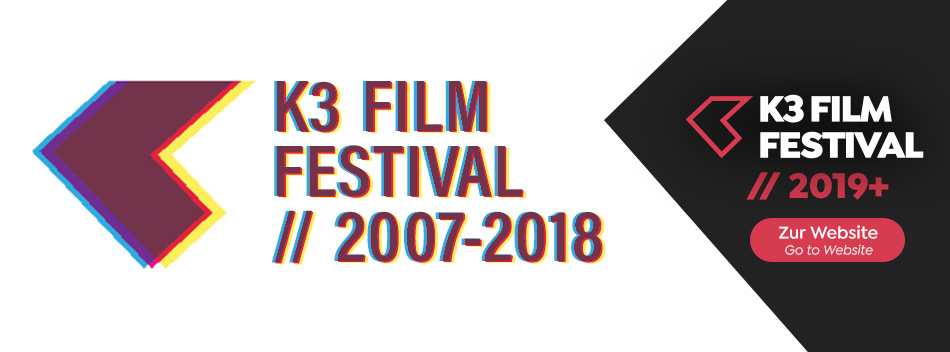Retrospective IVAN LADISLAV GALETA

Photo: Davor Konjikusic
Galeta’s small cinematic universe is indefinite but not infinite; sometimes he lets you see the edges. By Vassily Bourikas curator of the Experimental Forum - Thessaloniki International Film Festival
PROGRAMME IN DETAIL
August, 23rd, 21:00, Visionario, Udine
at the presence of the author
I. TWO TIMES IN ONE SPACE
Due volte in uno spazio
35 mm, b/w, 12', 1976/1984

The title of Two Times in One Space (1976-1984) does not allow room for questioning Galeta’s focus on this subject; Time and Space. Although many of his films could appear as found footage works, this is the only one time where Galeta borrowed images and he treats them almost as a Duchamp-ean “ready made.” His use of titles is again utilized, but here only in order to highlight his respect of the original material, a short film by Nicola Stojanoviç. A simple optical and sound effect converts this already gripping short to one of Galeta’s most conceptual single channel films, a battlefield of space and time. Circles and spheres are a recurring motif in Galeta’s work.
II. SFAÍRA 1985-1895
35mm, b/w, 10', 1984

sfaira (1971-1984) dedicated to Pythagoras and Plato is a homage to two of his favourite spheroids: the Earth and the Sun. The protagonist, as we are informed by the title sequence, is a sculpture named Earthbound Sun and the film’s photography, a stunning example of optical printing techniques, shows his affection to both. Sfaira’s subject, the sun and the cosmos appears as a precursor to Galeta’s magnum opus Water Pulu 1869 1896 (1973-1987). Galeta with this filmdelivers a pictorial and literary Maximalism, in a way that only cinema could do but had not done before.
III. WATER PULU 1869 1896
35mm, color, 9', 1987/1988

Galeta has created a black hole, an object whose gravitational pull inside the radius of cinema is so strong that no film viewer can escape it. He applies a mathematical and geometrical editing system in a film that shows hardly any edits. His conceptual manipulation of themere footage of a water-polomatch is at the same time as eye-catching, complex and original as anything that ever came out of an optical printer. The film is explicitly abstract and at first this visual strength allows deliberate implications of its own narrative nature to go unnoticed. As the nuances in both sound and image continue and peak with the end credits, the presence of an unseen narrative is established.
IV. WAL(L)ZEN
35mm, color, 6', 1989

WAL(L)ZEN was re-worked at the Béla Balázs Studio in Hungary and determines, according to Galeta, the basic principle of movement. A piano player is able to perform a Chopin piece backwards and Galeta will film it backwards and forwards creating four different variations of a movement bound to time. The rhythmical editing concept of WAL(L)ZEN is one of the key elements that makes a first appearance in his work. This musical geometry of montage will characterize all his films, even those that have no visible cuts or are completely silent.
V. PíRâMídas 1972-1984
35mm, color, 12', 1984

PiRaMidas (1984) which was also produced at the BBS, begins with dedications to Hermes, Lao Tse and Einstein among others. Even the preoccupation with stating the datesof first conception and final realization of his films (in PiRaMidas 1972-1984) is part of this process, while at the same time yet another obsession with time. PiRaMidas is a geometrical timetravel by train. To a certain point in space and back again. The first specific idea for the film PiRaMidas 1972 1984 came from this drawing by Szpakowski. The use of title and closing credit sequences for adding well-hidden or more obvious connotations is another Galeta trademark.
IVAN LADISLAV GALETA in the village Kraj Gornji, near Zagreb. He graduated from the School of Applied Arts in Zagreb (1967), followed by a degree in Fine Arts from the Faculty of Teacher Training (1969) and Pedagogy from the Faculty of Humanities and Social Sciences in Zagreb (1981). From 1977 to 1990, he was the manager of the University of Zagreb Students Multimedia Centre (MM), the first systematic venue for the screening of national and international experimental film and video art in Croatia. He was the founder and manager of the art cinema Filmoteka 16 (1991-1994). He initiated the introduction of animation (2000) and new media studies (2004) at the same Academy. In 1993 he became an associate media lecturer at the Academy of Fine Arts in Zagreb, and since 2007 he has been a full-time professor. He has been making films since 1969 and videos since 1975. From 1973 he has been exhibiting objects-installations, photographs-installations, expanded cinema presentations, video and TV works, texts, sound installations, spatial interventions, environmental projects and actions. In the mid 1990s he adopted an environmental approach to art with references to Henry David Thoreau, Karel Čapek, Masanobu Fukuoka, Bill Mollison, James Joyce, Bela Hamvas, Claude Monet and others. His works are kept at the Museum of Contemporary Art in Zagreb, Centre Georges Pompidou, Oberhausen, Croatian Film Clubs’ Association… He has won numerous awards, including a medal of honour by the Ministry of Culture and Communications of the French Republic in 1999.






















